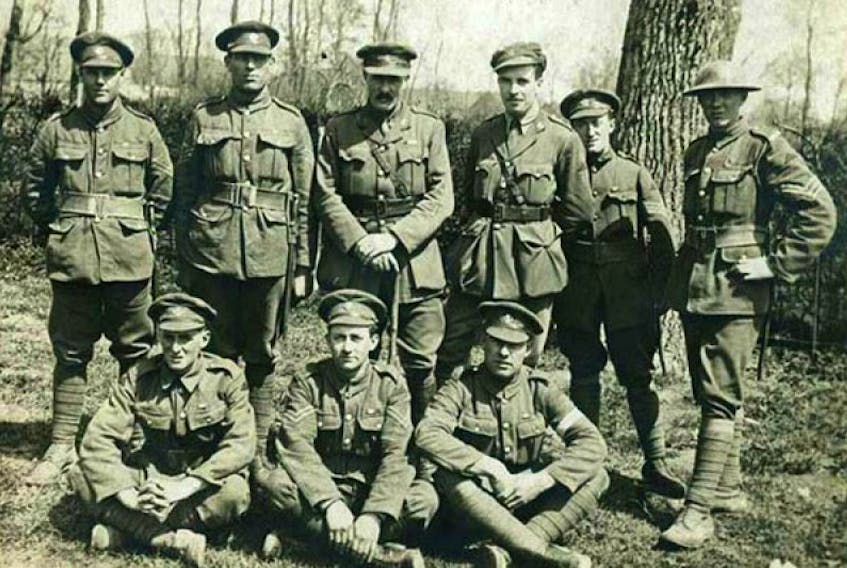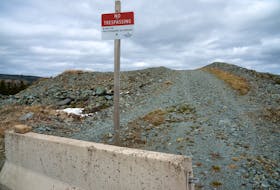Only 68 of the 801 soldiers who attacked that morning were able to answer the roll call the next day.
And Tommy Ricketts, a 17-year-old boy from Middle Arm in White Bay who won the Victoria Cross, is the best known of all Newfoundland’s military heroes.
It takes nothing away from the heroism, gallantry and sacrifice of those who fought at Beaumont Hamel to recall that their effort was a military folly, which served no purpose except to destroy a battalion of Newfoundland’s finest young men, nor does it diminish Ricketts’ glory to remember that the heroic acts for which he, and his four comrades, were decorated were a small incident during the victorious advance of the British Army through Flanders in the fall of 1918.
But many military historians would argue that the regiment’s engagement at Monchy-le-Preux in April 1917 was its greatest victory during the long struggle on the Western Front, and that the “10 men who saved Monchy” stand very high among the heroes of the Great War.
Monchy, as Newfoundlanders call it, was a small part of the three-month long Battle of Arras, in northern France. The engagement began at 5 a.m. on April 14 as a relatively small attack by two battalions — the Newfoundlanders and their comrades in the 88th Brigade, the 1st Essex, 1,500 men in all.
It was doomed from the outset. Flawed planning by both division and brigade staff, exacerbated by faulty execution, put both units in peril from the moment they left their trenches. They were ordered to advance with their flanks exposed, and their initial success was not supported by the battalions on either side of them.
Atop that, the British High Command had failed to understand the “elastic defence in depth” tactics adopted by the Germans some months earlier, when they fell back to the Hindenburg line, a very strong defensive position.
A German counter-attack turned into a rout of the men of both British battalions, who soon found themselves all but surrounded. Many, including 153 Newfoundlanders, were forced to surrender.
The failed attack opened up a great opportunity for the Germans — a resolute advance would have allowed them to break through the British front line. Lt.-Col. James Forbes-Robertson, commanding the Newfoundlanders, was unaware of the threat until shortly after 10 a.m., when a wounded survivor reported to battalion headquarters, several hundred yards behind the front line.
Forbes-Robertson sent Lt. Kevin Keegan forward to reconnoitre. Within 20 minutes, he reported that every Newfoundlander who had taken part in the attack was either wounded, dead or captured. Forbes-Robertson immediately gathered the headquarters staff — signallers, cooks, clerks and staff officers — and led them forward toward the enemy.
They were only a handful at the start, 20 in all, and only 10 made it to the protection of a hedge a few yards behind the trench from which their comrades had jumped off earlier that morning. Armed with rifles and ammunition picked up during their frantic rush forward, the 10 men were all that “stood directly between the Germans and Monchy, one of the most vital positions on the whole battlefield,” in the words of the British Army’s official history.
Maj.-Gen. Sir Beauvoir de Lisle, the commanding officer of the 29th Division, of which the Newfoundlanders were a part, told them afterwards that 40,000 men would have been required to recover Monchy had the Germans captured it.
Those 10 men — nine of them Newfoundlanders and the 10th from the Essex Regiment — stopped the entire German army that morning. They held up hundreds of the enemy for more than 11 hours before relief reached them.
The regiment — indeed, the British Army — knew no greater example of heroism during the entire war. The official citations in the London Gazette described the men’s actions as a combination of “conspicuous gallantry” and “the greatest gallantry.” All 10 were awarded decorations — Forbes-Robertson received the Distinguished Service Order, second only to the Victoria Cross; Keegan received the Military Cross; and the other eight men received the Military Medal, the enlisted soldiers’ equivalent to the Military Cross. (The British class structure extended even to the gallantry decorations awarded to their army’s soldiers.)
Forbes-Robertson subsequently won the Victoria Cross, in April 1918, as well as a Bar (a second award) to his DSO and the Military Cross, becoming one of the most decorated officers of the First World War. Keegan also won a Bar to his MC. Both survived the war, as did five of their eight comrades.
Tony McAllister’s new book, “The Greatest Gallantry,” tells the story of Monchy fully and accurately, if you want to know more about the battle.
Edward Roberts has had a lifelong interest in the history of Newfoundland and Labrador. He was an MHA for 23 years, and served as the province’s lieutenant governor from 2002 to 2008. He resides in St. John’s.
Editor’s note: This article first appeared in TC Media papers in September 2011









